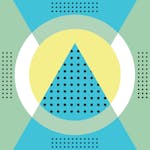Graphic Design Terms: A to Z Glossary
Interested in Graphic Design, but you keep seeing terms unfamiliar to you? This A-to-Z glossary defines key Graphic Design terms you need to know.
Graphic design professionals pursue a career focused on visual communication and design. They possess a diverse skill set encompassing typography, layout design, color theory, image editing, branding, user interface (UI) design, and print production. Graphic designers are crucial in creating visually compelling and engaging designs for various purposes. They leverage their expertise to communicate messages, evoke emotions, and enhance the user experience through visually appealing designs. They collaborate with clients or teams to understand design requirements, conceptualize ideas, and create designs using software tools and techniques. Graphic designers contribute to branding, marketing campaigns, website design, packaging, and other visual materials. Their creativity and attention to detail enable individuals and organizations to effectively convey their messages, captivate audiences, and leave a lasting impact in a visually-driven world.
This graphic design glossary can be helpful if you want to get familiar with basic terms and advance your understanding of graphic design.
Graphic Design Terms: A to Z Glossary
Interested in Graphic Design, but you keep seeing terms unfamiliar to you? This A-to-Z glossary defines key Graphic Design terms you need to know.
Graphic design professionals pursue a career focused on visual communication and design. They possess a diverse skill set encompassing typography, layout design, color theory, image editing, branding, user interface (UI) design, and print production. Graphic designers are crucial in creating visually compelling and engaging designs for various purposes. They leverage their expertise to communicate messages, evoke emotions, and enhance the user experience through visually appealing designs. They collaborate with clients or teams to understand design requirements, conceptualize ideas, and create designs using software tools and techniques. Graphic designers contribute to branding, marketing campaigns, website design, packaging, and other visual materials. Their creativity and attention to detail enable individuals and organizations to effectively convey their messages, captivate audiences, and leave a lasting impact in a visually-driven world.
This graphic design glossary can be helpful if you want to get familiar with basic terms and advance your understanding of graphic design.
Graphic Design Terms
Alignment
Alignment refers to the arrangement of elements within a design to create a sense of order and visual harmony. It involves positioning text, images, and other design elements along a common axis or edge. Proper alignment improves readability, organization, and overall aesthetics in a design.
Balance
Balance is the distribution of visual weight in a design. It ensures that elements are arranged harmoniously, and no single element overpowers the others. Balance can be achieved through symmetrical, asymmetrical, or radial arrangements of elements. It creates stability and enhances the overall composition.
Color Theory
Color Theory studies how colors interact, blend, and affect emotions and perceptions. It encompasses concepts such as color harmony, psychology, temperature, and symbolism. Understanding color theory helps designers effectively use color to evoke specific moods, convey messages, and create visual impact.
DPI (Dots Per Inch)
DPI, or Dots Per Inch, refers to the resolution or level of detail in a digital image or printed design. It represents the number of dots or pixels per linear inch. Higher DPI results in finer detail and sharper image quality, while lower DPI may lead to pixelation or loss of detail.
Emphasis
Emphasis, or the focal point or emphasis point, is a design principle that draws attention to a specific element or area within a composition. It can be achieved through contrast, size, color, positioning, or other visual techniques. Emphasis guides the viewer's eye and helps communicate hierarchy and importance in a design.
Grid
A Grid is a framework of horizontal and vertical lines used to align and organize design elements. Grids provide structure, consistency, and visual order in a design. They assist in creating balanced layouts, ensuring alignment, and establishing visual hierarchy.
Hierarchy
Hierarchy refers to the arrangement and organization of elements based on their importance or significance in a design. It involves visually communicating the information order, such as headlines, subheadings, body text, and captions. Hierarchy guides the viewer's attention and helps convey the intended message effectively.
Iconography
Iconography uses symbols, icons, or pictograms to represent concepts, ideas, or actions. Icons are simplified visual representations that convey meaning and facilitate quick recognition. Iconography is crucial in user interfaces, signage, branding, and visual communication.
Illustration
Illustration is the creation of visual representations, often hand-drawn or digitally rendered, to convey a story, idea, or concept. Illustrations can be used in various design contexts, including editorial design, advertising, packaging, and digital media. They add a unique artistic touch and enhance the visual appeal of a design.
JPEG (Joint Photographic Experts Group)
JPEG is a commonly used image file format that employs lossy compression to reduce file size while maintaining acceptable image quality. JPEG is suitable for photographs and complex images but may result in some loss of detail or clarity due to compression.
Kerning
Kerning is the adjustment of space between individual pairs of characters in typography. It ensures even spacing and proper visual alignment between letters. Kerning is crucial for achieving balanced and visually pleasing typography, especially in headlines, logos, and large text blocks.
Layout
Layout refers to arranging and placing design elements within a given space, such as a webpage, print publication, or advertising material. It involves considering factors such as hierarchy, flow, balance, and usability. An effective layout enhances readability, visual appeal, and overall user experience.
Mockup
A Mockup is a visual representation or prototype of a design concept. It is often created using graphic design software or specialized mockup tools to showcase how the final product or design will look. Mockups provide a realistic design preview, allowing clients and stakeholders to visualize and provide feedback before production.
Negative Space
Negative space, also known as white space, is a design's empty or unoccupied area. It is intentionally left blank to create a sense of balance, separation, and emphasis. Negative space enhances readability, allows the eye to rest, and helps highlight essential design elements.
Opacity
Opacity refers to the level of transparency or translucency of an element or color in a design. It determines how much of the underlying content or background is visible through the object. Adjusting opacity can create overlays, blend elements, or add depth and visual interest to a design.
Pixel
A Pixel, short for picture element, is the smallest unit of a digital image. It is a tiny square that represents a single point of color. Pixels collectively form the images we see on screens. The resolution of a display or image is determined by its number of pixels.
QR Code
A QR (Quick Response) Code is a two-dimensional barcode with black squares arranged on a white background. QR codes can store URLs, text, or contact details. They are scannable using smartphones or QR code readers, enabling quick access to digital content or actions.
RGB (Red, Green, Blue)
RGB is a color model representing colors as red, green, and blue light combinations. It is the primary color model used in digital displays and image processing. A wide range of colors can be displayed on screens by varying the intensity of these three colors.
Typography
Typography is the art and technique of arranging and designing typefaces to make written language legible, readable, and visually appealing. It involves selecting appropriate fonts, adjusting letter spacing, line spacing, and other typographic elements. Typography plays a vital role in establishing a design's tone, hierarchy, and personality.
Vector
A Vector is a digital graphic comprising mathematical equations and geometric primitives, such as points, lines, and curves. Unlike raster images, vectors are resolution-independent and can be scaled or resized without losing quality. Vector graphics are commonly used in logos, icons, and illustrations.
User Interface (UI)
User Interface (UI) refers to the visual elements, controls, and interactions that allow users to interact with a digital product or application. UI design focuses on creating intuitive and user-friendly interfaces that facilitate seamless navigation, usability, and an enjoyable user experience.
Visual Identity
Visual Identity encompasses visual elements representing a brand or organization, such as logos, color schemes, typography, and graphic styles. It provides a consistent and recognizable visual representation of the brand's values, personality, and positioning. A strong visual identity helps differentiate and establish a cohesive brand image across various touchpoints.
Wireframe
A Wireframe is a visual blueprint or skeletal representation of a webpage, application, or user interface. It outlines a design's structure, layout, and functionality without including detailed visuals or aesthetics. Wireframes are used to plan and communicate the overall design and user flow before moving into the visual design phase.
Conclusion
Congratulations on completing the A-Z glossary of graphic design terms! You now have a solid understanding of key concepts and terminologies that are essential in the field of graphic design. Whether you're a designer, learner, or enthusiast, this glossary will be a valuable resource to enhance your design knowledge and vocabulary. Remember to experiment, stay curious, and continue exploring the vast world of graphic design.
Learn in-demand graphic design skills from industry leaders.
Graphic Design Courses | Marketing Courses | Adobe Illustrator Courses | Photoshop Courses | Canva Courses | Drawing Courses | Illustration Courses | User Experience Design Courses | Typography Courses | Social Media Marketing Courses | Web Design Courses | Character Design Courses
 Join a community of over 100 million learners from around the world
Join a community of over 100 million learners from around the world Learn from more than 200 leading universities and industry educators.
Learn from more than 200 leading universities and industry educators. 70% of all learners who have stated a career goal and completed a course report outcomes such as gaining confidence, improving work performance, or selecting a new career path.
70% of all learners who have stated a career goal and completed a course report outcomes such as gaining confidence, improving work performance, or selecting a new career path.- 100% online
- Flexible schedule
- Mobile learning
- Videos and readings from professors at world-renowned universities and industry leaders
- Practice quizzes
Can’t decide what is right for you?
Try the full learning experience for most courses free for 7 days.Register to learn with Coursera’s community of 87 million learners around the world






